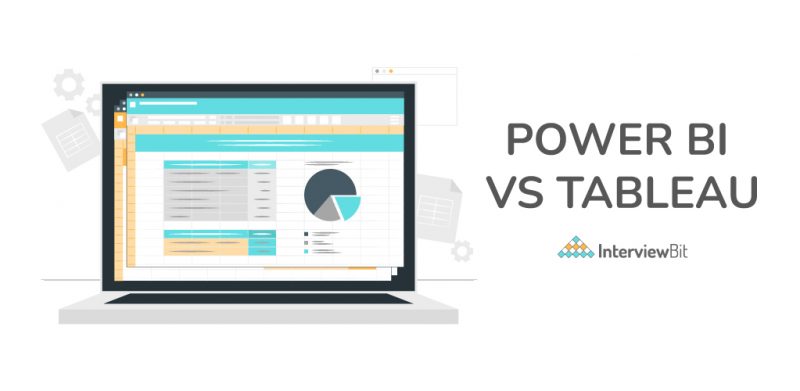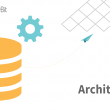- Introduction
- What is Power BI?
- What is Tableau?
- Power BI vs Tableau: Key Differences
- Power BI vs Tableau: Tabular Difference
- Advantages of Power BI
- Disadvantages of Power BI
- Advantages of Tableau
- Disadvantages of Tableau
- Tableau or Power BI: Which one is better?
- Conclusion
- Frequently Asked Questions
- Q.1: What is more popular, Power BI or Tableau?
- Q.2: How much do Power BI and Tableau cost?
- Q.3: Which is easier to learn: Power BI or Tableau?
- Q.4: Is Tableau the best BI tool?
- Q.5: Is Power BI the same as Tableau?
- Additional Resources
Introduction
The new world of data visualization is emerging at a fast pace with new players coming into the market. Business intelligence tools play an essential role for any business team. They provide ease to collect, store, and visualize several types of data to end-users. The two most popular Business Intelligence tools are Power BI and Tableau.
Currently, they are the market leaders in the Business Intelligence society. This blog helps you understand the essential features of both the tools, their products, the pros and cons of both of these tools, and Power BI vs. Tableau.
What is Power BI?
Power BI is a leading BI tool for data analytics, creating data visualization, and preparing ad-hoc reports that give a multi-perspective view of the dataset. You can handle data from different sources after the cleaning (data cleaning involves steps like importing data, transforming data to tabular format, splitting up columns, removing unnecessary rows, and unpivoting the region columns) and integration (data integration means aggregating data from various sources and creating a single data model for analysis) process. It allows you to view, visualize and analyze the data. It uses powerful compression algorithms to import data in.PXIB file. It provides multiple software services, over 100 connectors, and a drag-drop feature, increasing ease of use. Dashboards generated are practical and easy to understand. Power BI uses Microsoft systems like Excel, Azure, and SQL, making it an easy win for those already using Microsoft products.
Confused about your next job?
Features of Power BI
- Power BI can spot trends in real-time, which helps to identify issues and improve its performance.
- It is easy to use Power BI due to its simple interface.
- Power BI has auto-search capabilities. You can ask questions, and its Q&A feature will quickly answer your questions which lets you explore your data in your own words.
- Power BI allows you to visualize data in every possible way using its advanced analytics and custom visualizations. It provides a range of detailed and attractive visualizations like area charts, bar and column charts, combo charts, decomposition trees, donut charts, funnel charts, etc.
- The Get data feature of Power BI lets users select a wide range of data from various data sources like Power BI datasets, Power BI dataflows, SQL Server, etc.
- Power BI provides you with flexible tiles. A tile is a single block that is part of visualization in a Power BI dashboard. Tiles can segregate each informative visualization properly to give a clearer view. The adjustment and size of the tiles can be easily handled.
- The Power BI comes up with DAX functions (Data Analysis Expressions). These functions are predefined codes to perform analytics-specific data functionalities.
Products of Power BI?
Here is the list of Power BI products:
- Power BI Desktop: It is a free application that allows you to connect to several data sources. The data collected is combined into a data model used to build sharable visuals and reports.
- Power BI Service: It is a SaaS segment of Power BI, also referred to as Power BI online. It is used to collaborate and distribute Power BI reports.
- Power BI Mobile: It is a mobile app that brings Power BI to your pocket. You can easily access your up-to-date business information. You can connect to on-premise and cloud data.
- Power BI Report Builder: It is a tool for creating paginated reports published to Power BI services. Users can modify these reports too.
- Power BI Report Server: It is an on-premises report server to manage and display reports and KPIs. This tool is available through premium licensing of Power BI.
- Power BI Embedded: It is a service to embed visuals, reports, and dashboards into an application.
What is Tableau?
Tableau is a popular data visualization and business intelligence tool used for reporting and analyzing vast volumes of data. It helps users create different charts, graphs, maps, dashboards, and stories to visualize and analyze data to help make business decisions. The data generated with Tableau is easy to comprehend for business people of all levels because of its understandable format. You don’t need to acquire any highly technical skills to create a custom dashboard in Tableau.
Features of Tableau
- Tableau is very flexible. You can connect to different kinds of data. It provides you with many data connectors for databases. You can connect to an Excel file, JSON file, text file, etc.
- Tableau allows you to connect to different servers like Tableau Server, Microsoft SQL Server, etc.
- It provides you with an intuitive platform. You can represent your data in several creative ways with its wide range of visualizations like histograms, gantt charts, motion charts,boxplots, etc.
- Tableau comes with a map feature. You can get pre-installed information on maps like postal codes, cities, administrative boundaries, etc., making the maps created on Tableau very informative and detailed.
- Tableau helps establish live data connections, which allows you to use data from the data sources directly.
- Tableau provides you with robust data and user security with the help of its authentication feature and permission systems for data connections and other access.
- Tableau comes with an Ask Data feature. You can type a query for your data in a common language on tableau, and it will give the most relevant answers in the form of automatic data visualizations.
Products of Tableau?
Here is the list of Tableau products:
- Tableau Prep: This tool helps prepare your data efficiently and intuitively. It provides visuals and helps to combine, shape, and clean the data. It also automates the data prep flows that make your analysis faster.
- Tableau Desktop: It is a platform that helps in analyzing and identifying valuable insights for any organization. You can explore data with its intuitive interface, which allows for data-driven decision-making.
- Tableau Server: It is a central repository for users, visualizations, and data sources. It helps to share your data across the entire organization very quickly.
- Tableau Online: It is an online sharing tool similar to the Tableau server; the only difference is that data is stored on servers hosted in the cloud.
- Tableau Mobile: You can take your data-driven decisions from anywhere at any time using your iOS or Android device. It becomes easy to access and monitor your dashboards in a go.
Power BI vs Tableau: Key Differences
Power BI is easy to learn as compared to Tableau.
- It allows you to create new columns, delete unnecessary columns, modify data, change formats, etc., but Tableau allows you to work on pre-processed data itself. Users can alter the data type and split columns, but they cannot remove unnecessary columns.
- Power BI focuses on the “flow” to have a smooth and consistent user experience. On the other hand, Tableau focuses on coding to provide you with new visual effects which third parties create.
- Power BI uses DAX for calculating and measuring columns, while Tableau deploys MDX for measures and dimensions.
- Power BI offers PowerPivot dots (user to perform efficient data analysis) more user-accessible, but Tableau does not provide this.
Power BI vs Tableau: Tabular Difference

Let’s look at some more differences between Power BI and Tableau.
| Power BI | Tableau |
| Power BI is a low-cost software. The professional version of Power BI costs less than $10 per month per user. | Tableau is more expensive than Power BI. The pro version of Tableau costs more than $35 per month per user. |
| It performs faster and better when the data volume is limited, but becomes slow while handling bulk data. | It is suitable for handling large volumes of data quickly and provides extensive features for visualizing the data. |
| The customer support is limited with a free Power BI account. | It has excellent customer support because of its large community forum for discussions. |
| It supports R language-based visualizations. | It provides full integrated support for R and Python. |
| It is suitable for small-sized and medium-sized organizations. | It is suitable for medium-sized and large-sized organizations. |
| With the Embed option in Power BI for its reports, you can easily and securely embed reports in internal web portals. | Embedding reports to a different environment is a challenging task in Tableau. |
| Power BI offers a query editor (used to edit data files before loading it to Power BI) that helps to do a lot of things easier. | Tableau does not support this feature. |
| Power BI doesn’t run on Mac, it can only run on Windows since it is a Microsoft’s application. | Tableau can run on Windows and Mac OS. |
| It is generally use by naïve users and experienced users. | It is generally use by analysts and experienced users for their analytics purposes. |
| Power BI supports various data sources but has limited access to other databases and servers compared to Tableau. | Tableau Software has access to several data sources and servers. |
| Power BI has stringent licensing and SaaS infrastructure | Tableau has flexible licensing and n-tier client server architecture.. |
| It is integrated with Microsoft Azure, which helps in analyzing the data and understanding the patterns of the product. | Tableau has built-in machine learning capabilities which makes it suitable for doing ML operations on datasets. |
Advantages of Power BI
- Power BI is an affordable tool. The Power BI desktop is free of cost, you can create datasets, dashboards, and reports for yourself and share them with your co-workers for their analysis, but for sharing reports on the cloud, you need to pay 9.99$ per user per month.
- It is easy to use. If you have intermediate knowledge of Excel, you can go on with using this tool.
- Microsoft comes up with updates for their software monthly, and so for Power BI. Users can experience newly developed features frequently.
- With Power BI, you can access data from different data sources from anywhere and anytime multiple times.
- Power BI comes up with interactive dashboards, and users can filter, highlight features, etc., in a single click.
- The query editor in Power BI helps to modify data files before they are actually loaded into the Power BI.
- Power BI provides quick deployment in a secured environment. It can also integrate with Python and R language for using visualizations.
Disadvantages of Power BI
- The Power BI desktop version is not compatible with iOS.
- It has a clunky interface filled with many icons that may block the view of reports and dashboards.
- It does not accept a file size greater than 1GB.
- Sometimes it becomes difficult to process larger datasets with complex features because Power BI may crash in these situations.
Advantages of Tableau
- Tableau provides you with online resources, guides, training, and an online forum, making the Tableau community more engaging.
- The software upgrades in Tableau are easy to be carried out.
- The overall performance of this tool is high and secure. Tableau can create different kinds of visualizations in one shot.
- It is possible to handle a large amount of data with Tableau.
- Users are allowed to incorporate Python or R for performing complex table calculations.
Disadvantages of Tableau
- Tableau does not provide an automatic option for refreshing reports, which increases manual efforts to update data in the back-end.
- Tableau does not provide you with version control which means you can’t get back to the previous level of data once the reports and dashboards are published.
- Tableau has a limit of 16 column table display, so users sometimes find difficulty in displaying data for larger tables.
- Tableau has static parameters, you can only select a single value using a parameter, and whenever the data is changed, these parameters are manually updated and not automatically.
Tableau or Power BI: Which one is better?
Both the tools have their own specific features. To select between these two, one needs to think about parameters like which person will use the tool (stakeholders or data analysts), what are their requirements, the size of the organization using the tool, the volume of data being used, etc.
Power BI comes up with intuitive features, therefore it is easy to learn. So it can be used by stakeholders who don’t have much knowledge as data analysts but want to do data analysis. In the case of Tableau, the interface is not very intuitive; therefore, quite challenging to learn. So, it can be used by data analysts who know data science and visualizations.
So, Power BI is better for its ease and Tableau for its speed and additional capabilities.
Conclusion
In this blog, we covered the basic information and key differences between the two powerful business intelligence and data visualization tools. The selection of one is situation-dependent. There are several parameters to be considered before going with one of the two. The ultimate goal is to gain valuable insights from the data and to achieve this, the technicians should choose the one wisely.
Frequently Asked Questions
Q.1: What is more popular, Power BI or Tableau?
Ans: Google Trends suggests that Tableau is more popular and widely searched on the internet. Even on YouTube, Tableau is more popular than Power BI in terms of search volume because of its unique benefits.
Q.2: How much do Power BI and Tableau cost?
Ans: Power BI has a free version available for individual use, but its pro version plan costs $9.99 per month per user. Tableau’s equivalent package starts at $70 per month per user.
Q.3: Which is easier to learn: Power BI or Tableau?
Ans: Power BI is easier to learn because of its intuitive features that make it more user-friendly. On the other hand, Tableau is less intuitive and is quite difficult to handle for non-data analysts or for others who don’t have the domain knowledge.
Q.4: Is Tableau the best BI tool?
Ans: Currently, Tableau is very popular in the BI world due to its capability to create visualizations in a few seconds. It comes with some built-in analytics tools that can be directly used by users on their data.
Q.5: Is Power BI the same as Tableau?
Ans: It is similar to Tableau but not the same. There are additional several features present in Tableau which help increase its speed and efficiency.




